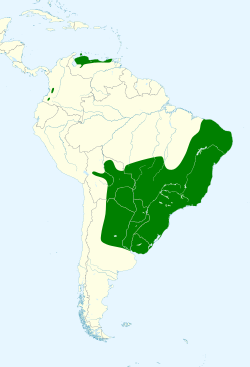| Ultramarine grosbeak | |
|---|---|
 | |
| Male in Registro, São Paulo, Brazil | |
 | |
| female | |
| Scientific classification | |
| Kingdom: | Animalia |
| Phylum: | Chordata |
| Class: | Aves |
| Order: | Passeriformes |
| Family: | Cardinalidae |
| Genus: | Cyanoloxia |
| Species: | C. brissonii |
| Binomial name | |
| Cyanoloxia brissonii (Lichtenstein, MHC, 1823) | |
 | |
| Synonyms | |
Passerina brissonii (protonym) | |
The ultramarine grosbeak (Cyanoloxia brissonii) is a species of grosbeak in the family Cardinalidae. It is found in a wide range of semi-open habitats in eastern and central South America, with a disjunct population in northern South America.
